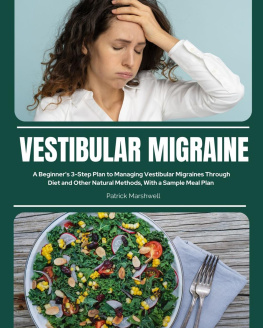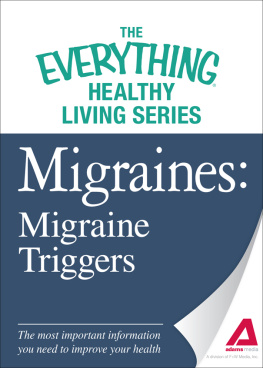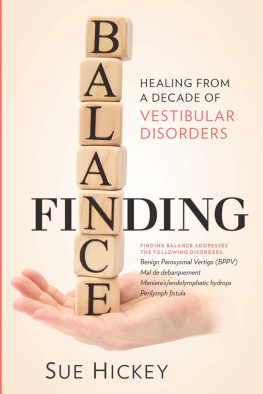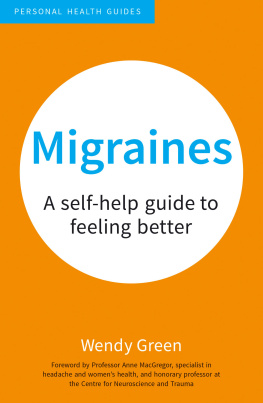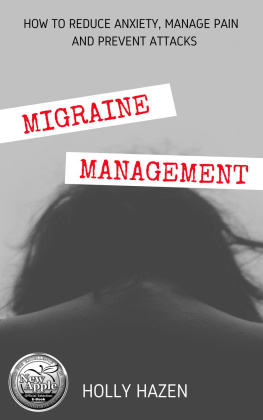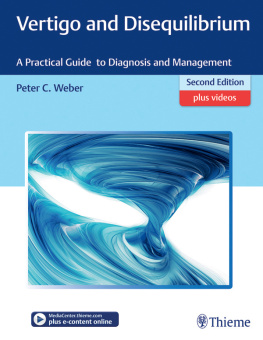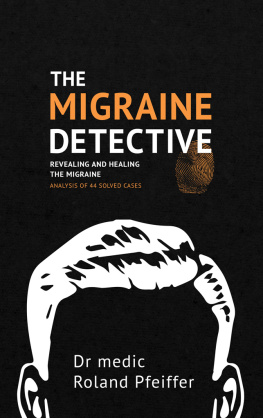Vestibular Migraine
A Beginner's 3-Step Plan for Managing Vestibular Migraines Through Diet and Other Natural Methods, With a Sample Meal Plan
Copyright 2022 Patrick Marshwell
All rights reserved. No portion of this book may be reproduced in any form without permission from the publisher, except as permitted by U.S. copyright law.
Disclaimer
By reading this disclaimer, you are accepting the terms of the disclaimer in full. If you disagree with this disclaimer, please do not read the guide.
All of the content within this guide is provided for informational and educational purposes only, and should not be accepted as independent medical or other professional advice. The author is not a doctor, physician, nurse, mental health provider, or registered nutritionist/dietician. Therefore, using and reading this guide does not establish any form of a physician-patient relationship.
Always consult with a physician or another qualified health provider with any issues or questions you might have regarding any sort of medical condition. Do not ever disregard any qualified professional medical advice or delay seeking that advice because of anything you have read in this guide. The information in this guide is not intended to be any sort of medical advice and should not be used in lieu of any medical advice by a licensed and qualified medical professional.
The information in this guide has been compiled from a variety of known sources. However, the author cannot attest to or guarantee the accuracy of each source and thus should not be held liable for any errors or omissions.
You acknowledge that the publisher of this guide will not be held liable for any loss or damage of any kind incurred as a result of this guide or the reliance on any information provided within this guide. You acknowledge and agree that you assume all risk and responsibility for any action you undertake in response to the information in this guide.
Using this guide does not guarantee any particular result (e.g., weight loss or a cure). By reading this guide, you acknowledge that there are no guarantees to any specific outcome or results you can expect.
All product names, diet plans, or names used in this guide are for identification purposes only and are the property of their respective owners. The use of these names does not imply endorsement. All other trademarks cited herein are the property of their respective owners.
Where applicable, this guide is not intended to be a substitute for the original work of this diet plan and is, at most, a supplement to the original work of this diet plan and never a direct substitute. This guide is a personal expression of the facts of that diet plan.
Where applicable, persons shown in the cover images are stock photography models and the publisher has obtained the rights to use the images through license agreements with third-party stock image companies.
Introduction
If you suffer from vestibular migraines, you know how debilitating they can be. The constant spinning, vertigo, and nausea make it difficult to function normally. Vestibular migraines are a type of migraine that affects the vestibular system, which is responsible for balance and eye movement. These types of migraines are often triggered by certain foods, stress, and changes in hormones. There is no cure for vestibular migraines, but there are ways to manage them.
One way to help manage vestibular migraines is by following a vestibular migraine diet. This type of diet can help reduce the frequency and severity of attacks. There are a few different vestibular migraine diets available, but they all have some common elements.
Another way to manage VM is through stress reduction techniques such as yoga, meditation, and aromatherapy. Reducing stress can help reduce the frequency and severity of attacks.
In this beginner's guide, you will discover...
What you need to know about vestibular migraines
How to avoid VM
Ways to manage stress and VM
Three-step plan to deal with VM
Diet meals to help manage vestibular migraines
All About Vestibular Migraines
Vestibular migraines, also called VM, are a type of migraine that affects the vestibular system, which is responsible for balance and eye movement. The word "vestibular" refers to the inner ear, and "migraine" is a type of headache that can cause severe symptoms.
A migraine is a type of headache that is often accompanied by nausea, vomiting, and extreme sensitivity to light and sound. Migraines are believed to be caused by a combination of genetic and environmental factors. The difference between a migraine and a tension headache is that a migraine usually comes on suddenly and is much more severe. Migraine sufferers often have to take time off from work or school, and some may even need to be hospitalized. There are several different types of migraines, including:
Migraine with aura: This type of migraine is characterized by visual or other neurological symptoms that occur before the onset of pain. Aura is the medical term for these symptoms. An aura is a warning sign that a migraine is about to happen. It usually begins gradually, then peaks and goes away within an hour or two. An aura can occur before or during a migraine headache, or it can happen without a headache.
Migraine without aura: This is the most common type of migraine, and is characterized by severe head pain with or without nausea and vomiting.
Basilar artery migraine: This rare type of migraine affects the basilar artery, which supplies blood to the brainstem. Symptoms include dizziness, headache, and nausea.
Hemiplegic migraine: This rare type of migraine is characterized by temporary paralysis on one side of the body. Headache and other neurological symptoms may also occur.
Within this context, vestibular migraines (VM) are a type of headache that specifically target the vestibular system, which is responsible for balance and eye movement. VM can occur with or without aura and is often characterized by vertigo (a spinning sensation), dizziness, nausea, and vomiting. Some people with VM also experience tinnitus (ringing in the ears) or visual changes.
The vestibular system is responsible for balance and spatial orientation. It consists of the inner ear, the central nervous system, and the muscles and joints that help us keep our balance.
The inner ear is made up of the vestibule, the cochlea, and the semicircular canals. The vestibule is responsible for sensing changes in position and movement. The cochlea is responsible for hearing. The semicircular canals are responsible for sensing changes in head movement.
The vestibular system is important for maintaining balance and spatial orientation. It helps us keep our balance while standing, walking, or running. It also helps us stay oriented when we are moving from one place to another. Without the vestibular system, we would be constantly off balance and disoriented.
Symptoms
Vestibular migraines can cause a wide range of symptoms that affect both balance and eye movement. These symptoms can include:
Dizziness
Vertigo (a spinning sensation)
Throbbing headache
Nausea
Vomiting
Tinnitus (ringing in the ears)
Visual changes
Sound and motion sensitivity
Symptoms of a vestibular migraine can vary from person to person. Some people only experience mild symptoms, while others may have more severe symptoms that interfere with their daily activities. VM can also occur in conjunction with other types of migraines, such as migraine with aura or basilar artery migraine.
It should be noted that a headache is not always present with vestibular migraines. About half of all people with VM do not have headaches. Therefore, be on the lookout for other symptoms of VM, such as dizziness, vertigo, nausea, and vomiting.
Next page
